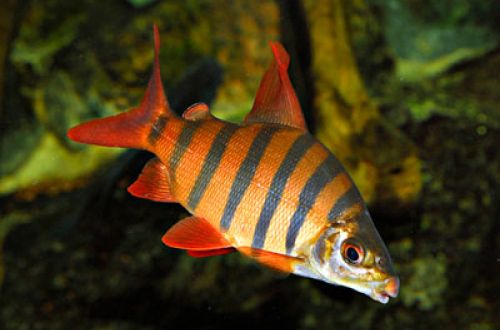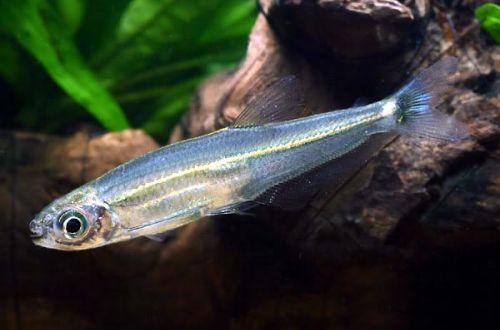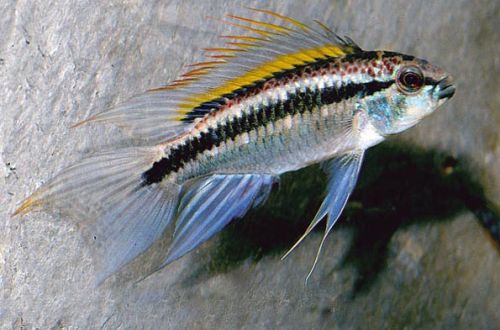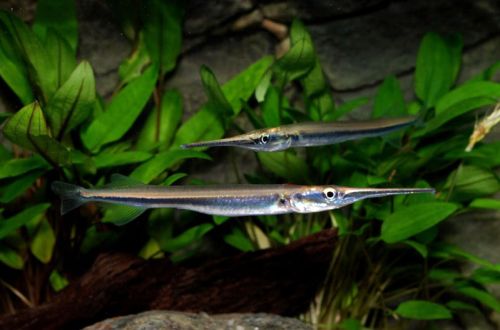
Long-nosed distychodus
The long-nosed distichodus, scientific name Distichodus sexfasciatus, belongs to the family Distichodontidae. A rather rare and large fish, it is distinguished by a striped body color, somewhat reminiscent of a perch. It belongs to expensive species, acquired mainly by collectors and experienced aquarists. It is almost impossible to find it in a regular retail network.

Habitat
A representative of African characins, lives in the basins of the rivers of Zaire, Congo. Prefers large rivers and their tributaries, lives in flocks. It feeds on soft vegetation such as young shoots of plants, leaves, and occasionally worms and other benthic invertebrates.
Description
The long-nosed distichodus has a characteristic elongated head and a forked caudal fin. The coloration is orange or golden in color with pronounced vertical black stripes running all over the body. With age, the pattern becomes less pronounced.
Food
It can be conditionally attributed to omnivores. However, fish prefer plant foods. Most of their diet should contain plant foods (cereals, tablets, fresh or frozen lettuce or spinach, peas). Another part of the meat feed (for example, bloodworms). If the fish is deficient in the main form of food, the aquarium plants will be eaten.
Maintenance and care
Any large fish produces a large amount of waste, this species is no exception, so the main condition for successful keeping is to ensure the purity of the water. An effective filter (preferably an external canister filter) and a 30% water change every two weeks can do the job. Other necessary equipment: aerator, lighting system, heater. The aquarium must be covered with a lid, fish are famous for their jumping.
In the design, it is recommended to use artificial plants located in groups near shelters, such as snags, grottoes, “castles”, “wrecks”, etc. Soil of smooth stones and coarse sand.
Social behavior
Young fish are peaceful, but with age the behavior becomes unpredictable, showing aggressiveness towards other smaller species and fish with long fins. A flock species, when kept in a group of 5 or more individuals, the degree of aggression decreases, however, other neighbors cannot feel safe. Compatible with catfish and other bottom dwellers.
Breeding / breeding
At home, successful cases of breeding have not been recorded.
Diseases
Long-nosed distichodus is hardy, in a balanced aquarium, as a rule, there are no health problems. Read more about symptoms and treatments in the Aquarium Fish Diseases section.





